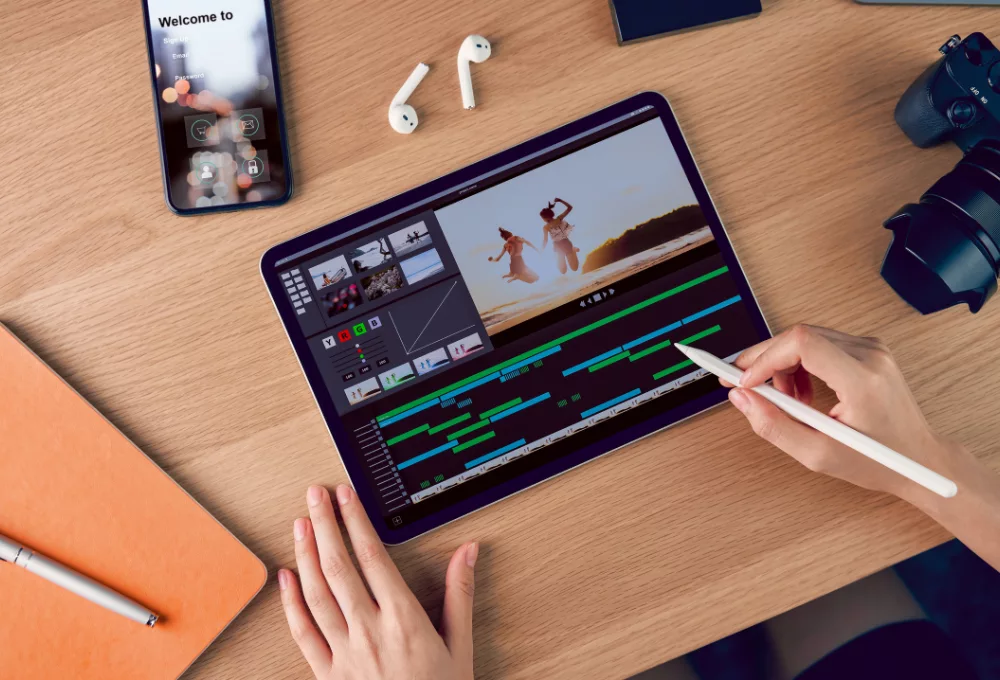Understanding video formats has easily become one of the most relevant subjects, especially with the widespread adoption of the HTML5 video format. HTML5 introduced the video tag, offering a standard way to embed video content on web pages. The HTML video element simplifies the process of adding videos, thus reducing the dependence on third-party plug-in software like Flash. The syntax is straightforward – you just define the video file and controls.
The complexities of compatibility between browsers such as Firefox, Chrome, and Safari require content creators and web developers to prioritize the universal appeal of their work. Comprehensive solutions like the HTML5 video player enable streamlined video encoding and seamless browser support, ensuring a smooth viewing experience.
So, how can you navigate this rapidly evolving terrain and select the most suitable video format for your needs? This article focuses on understanding different video formats like OGG, WEBM, and MP4 and how they interact in the HTML ecosystem, along with other elements such as the browser’s role, the encoding process, the browser’s support, and more.
The Evolution Of Video Formats
Adobe’s Flash Video ruled the roost in the web’s early years. Despite some significant issues, its popularity was undeniable, serving as the go-to framework for transferring and playing videos on the web. The most prominent of these include:
- Dependency on additional playback plugins offered less streamlining when visiting new websites or using various browsers.
- Sub-par mobile device support leads to inconsistencies and frequent crashes.
- Security risks due to vulnerabilities that could exploit users’ systems.
HTML5 is a beacon of hope for a web world seeking a universal solution. This new standard for modern web design forever changed the landscape of online video content. Being a browser-based solution, HTML5 video doesn’t rely on additional plugins, making playback more consistent across various browsers and platforms.

With HTML5, web developers are no longer restricted to a single file type; they can instead choose from three video codecs: MP4 (MPEG 4), WebM, and Ogg Theora. These work as follows:
- WebM and Ogg: Supported in Firefox, Chrome, and Opera browsers, they offer good video quality and efficient encoding but are not universally supported.
- MP4: Encoded with H.264 (a widely used standard for video compression), MP4 has wide support across browsers and devices, leading to a superior user experience.
The HTML5 video tag has been instrumental in pulling off this streamlined video integration. This simple HTML5 feature allows web developers to embed video content directly into web pages, leading to more browser compatibility and fewer fallback issues.
Moreover, native HTML5 video support means browsers inherently understand when to play, pause, or cease the video, offering an improved user experience and compatibility even with varying internet speeds and device capabilities.
On the user side, the advent of HTML5 introduced advanced video playback controls, allowing users to manipulate the video’s playback depending on their preference, whether it be speed, quality, or size.
The Different Video Formats And Browser Support
Not all browsers support every video format. Some might support HTML5 video formats like MP4, while others work well with OGG or WebM.
A. MP4
The MP4 video format, encoded with H.264 video codec and AAC audio codec, enjoys extensive browser support. Modern browsers like Firefox and Chrome can easily playback this format. However, such quality comes with a cost: it is a patent-encumbered format. Although it’s free to use, there might be legal implications for large-scale commercial use.
B. WebM
The WebM video format, typically using VP8 or VP9 video codec and Vorbis or Opus as the audio codec, is an alternative for MP4, gaining traction in supporting HTML5 video playback as it offers good quality videos at significantly lower bitrates.
WebM is the answer to the future of an open video format. Supported natively in HTML5, it presents an exciting contender to MP4’s dominance in the video tag game. This free, high-quality video file is Google’s brainchild, backing it with browser support in Firefox, Opera, Chrome, and partially in IE9. Still, it lags in support for Safari and older versions of IE, creating fallback situations.
C. Ogg (Theora)
The OGG format (Ogg Theora) is another popular choice for embedding videos. Ogg uses the Theora codec for video and the Vorbis codec for audio. It is free from patents and supported by Firefox and older browser versions.
Ogg, an open-source video codec with a mission to provide the internet with a free video format, rounds out our three primary formats. Its Theora video codec is great for streaming applications, but its quality is lacking compared to MP4 and WebM.
When baking video into your website with the HTML5 video element, it’s important to remember, “There ain’t no such thing as a free lunch.” Each format brings its own pros and cons to the table. The key is not to select ‘one’ video format but to ensure ‘compatibility’ with all three video formats that work natively to cater to a diverse segment of browsers and devices.
At Husky HD, ensuring quality video content isn’t merely about coding and embedding video into HTML5. It’s about considering the loss of video quality, browser compatibility, encoding, and even potential legal implications that tag along with the file formats.

Going Beyond HTML5
To ensure smooth playback on an HTML video player, the video file must be encoded in a browser-supported format. Encoding is a process that uses codecs (i.e., compression-decompression programs) to compress videos for delivery and then decompress them for playback.
We can manipulate video playback using JavaScript, giving developers more control over the video element. It allows for the customization of video controls, enhancing the user’s viewing experience.
A. Adaptive Bitrate Streaming (ABS)
ABS reigns as King. Its ever-vigilant approach leverages network conditions to provide the best possible video quality. It swiftly dances between video quality and buffer size, ensuring the viewer never experiences frustrating buffering issues.
ABS works with HTML5 video, encoding alternative bitrates of the original video. Its main benefit? A smooth, buffer-free ride for your audience, regardless of their connections.
B. MPEG-DASH
Next, we’ve got the (fairly) new kid on the block. A versatile and adaptive video format, it delivers high-quality, scalable video content over HTTP to every device at every network condition. A true poster boy of compatibility, it supports any codec.
The slight downside? Its support among browsers is limited to IE11 (Windows 8.1 onwards) and Android devices. But no worries! With fallback options, it’s a selectable video format in the HTML5 video panorama.
C. HLS — (HTTP Live Streaming)
Lastly, allow us to introduce HLS, the brainchild of Apple. Widely supported by iOS devices and Safari browsers, HLS is a streaming protocol that adjusts video quality in real time, tailoring it to the viewer’s network conditions. Its adaptive nature lets it dabble in native live streaming, like BFFs who complete each other’s sentences.
However, its browser support is tied to Safari (desktop & mobile) and Microsoft’s Edge. Once again, HTML5 and JavaScript Libraries swoop to bridge support across other browsers, providing a comprehensive format fallback mechanism.
In conclusion, the HTML5 video format has ushered in a more seamless way to embed and control video content on the web. While video formats like MP4, WebM, and OGG Theora play a critical role, understanding browser support and fallback strategies are crucial for a smooth and accessible video experience for all viewers.
We can expect even more capabilities and support for HTML5 video playback as technologies evolve.





0 Comments